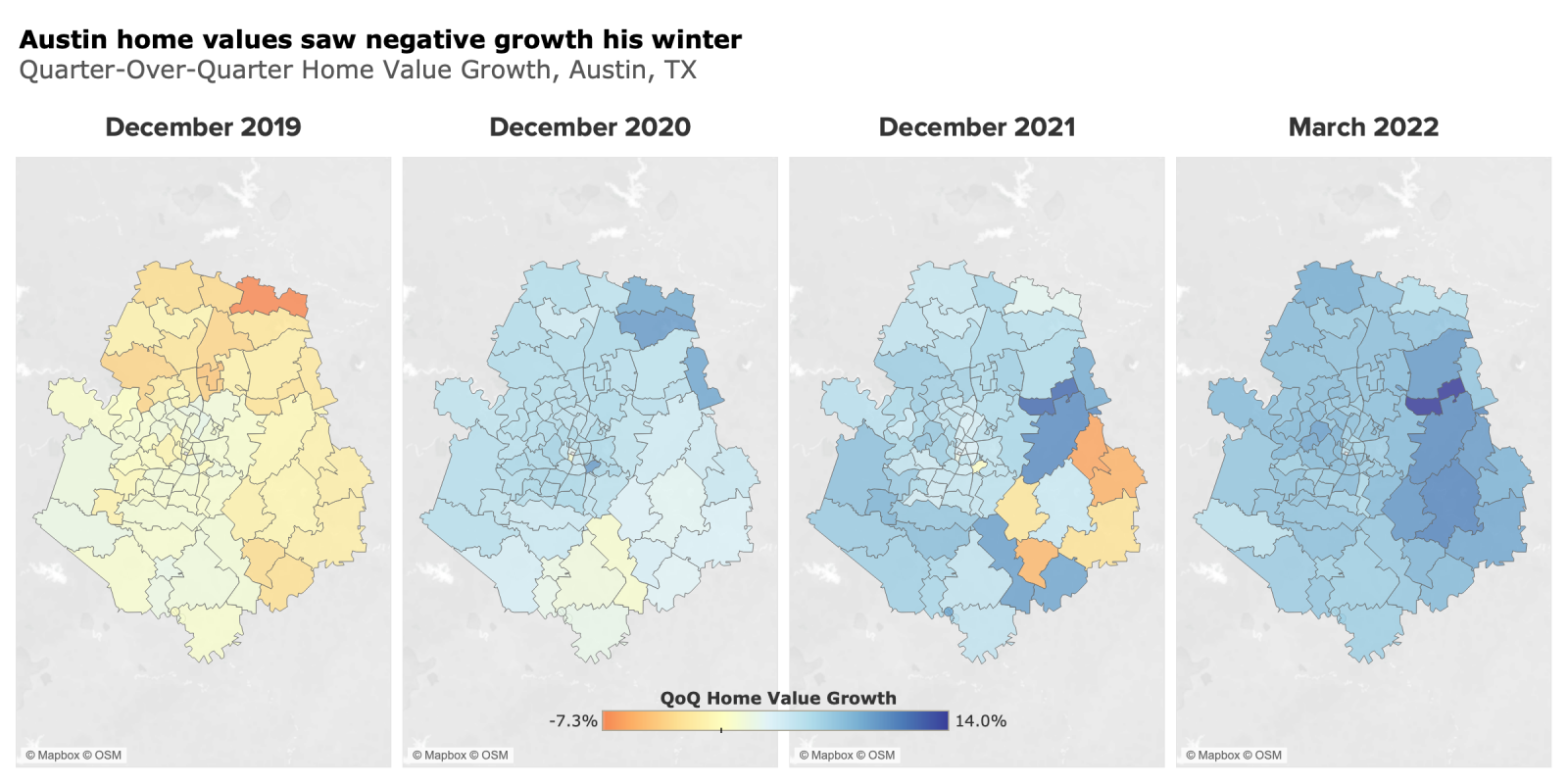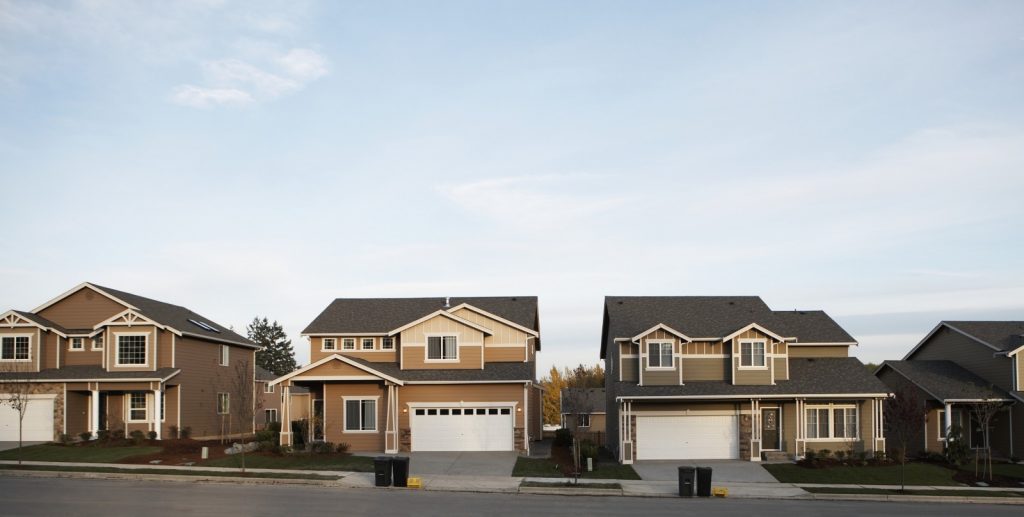Home Values Are Growing the Most in Suburbs, but Demand May Be Shifting Back Toward City Centers
The typical suburban home gained more value over the past year than the typical urban home. That is a reversal from previous norms and from the first 15 months of the pandemic.
- The typical suburban home gained more value over the past year than the typical urban home. That is a reversal from previous norms and from the first 15 months of the pandemic.
- Many buyers are prioritizing affordability and space over proximity to the workplace, with remote work now an option for more households.
- In some markets, such as Seattle and New York, where urban home values are much higher than home values in the suburbs, demand is starting to shift back nearer to city centers as the tradeoff in affordability from living in the suburbs is no longer as significant.
During the first 15 months of the pandemic, when many headlines foretold an exodus from urban centers, home value growth in urban ZIP codes closely followed that of suburban ZIP codes. But in recent months, we have begun to see a shift in favor of suburban areas, with the dollar gains in the typical home value increasing faster in the suburbs, indicating stronger demand and fiercer competition.
In terms of dollar value growth, home values in suburban ZIP codes have been growing faster on an annual basis than those in urban areas since July 2021. Nationally, the typical suburban home gained $66,490 in value in the year ending March 2022, while the typical urban home gained “only” $61,671 in value. Suburban home values outpacing urban homes has rarely been the case since January 2013, about when home values began to recover following the housing crash.
The rise of remote work has had a tangible effect on where and how people live, as seen in the changing relationship between housing and commute times. Home buyers have placed a greater emphasis on affordability and space than proximity to work.
To be sure, urban real estate has seen incredible growth as well. This is not a case of housing in the suburbs gaining value at the expense of urban real estate. It’s also worth noting that while the typical urban home is worth more than the typical suburban home across the U.S., that is not necessarily the case in every market. And there are signs that demand may be shifting back in favor of urban homes. In each of the first three months of this year, the gap between annual home value growth in the suburbs and in urban areas has shrunk. Annual suburban home value growth outpaced urban home value growth by about $7,250 in December, but only by about $4,820 in March.
The winter housing market, although hotter than in a typical year, showed some signs that perhaps the market had finally reached a turning point. Pockets of opportunity popped up in markets around the country where many ZIP codes — urban and suburban, and even rural, for that matter — showed negative quarterly growth. Austin, where home values have been among the fastest-growing in the nation during the pandemic, was one market that saw negative growth in some ZIP codes on the edges of the metro area this winter. Those have shifted back to positive this spring, albeit slower than the breakneck speeds that this market witnessed last year.

Just because a metro area’s housing market is still growing rapidly doesn’t mean that growth is spread equally. Seattle is an interesting case study because it is experiencing a big change in where growth is concentrated within the metro. In mid-2018, we saw the fastest home value growth, on a quarterly level, starting to expand out from the urban center to ZIP codes on the edges of the metro, possibly a result of buyers seeking affordable options after brisk price growth near the downtown core. Over the past year, the value of a typical suburban home in Seattle increased by $146,815, whereas the typical home in an urban ZIP code increased by $119,725.
But the strongest growth is starting to creep back toward Seattle’s urban core. The fastest-growing ZIP codes are still in the suburbs, but that growth is moving closer to the city center. The suburbs seeing the strongest growth are also some of the most expensive areas in Seattle — the fastest-growing cities have typical home values above $1 million — signaling that affordability is likely not the top priority for buyers in these in-demand areas.
The net result: In the summer of 2018, the typical Seattle metro home in an urban ZIP code was about $315,000 more expensive than the typical home in the Seattle suburbs, but now the difference is down to about $217,000. As the affordability tradeoff for living in the suburbs becomes less of a factor in markets like Seattle, we may see similar demand shifts become more common.
New York is another example of a metro where the trends recently have reversed. There was a strong preference for the suburbs in the beginning of the pandemic, with the fastest growth rates concentrated around the edges of the metro. As in Seattle, that is beginning to shift, with the strongest growth leaving the fringes and making its way back toward the city.
Still, the suburbs are seeing higher demand in much of the country. In the majority of the 50 largest U.S. metros, there was a higher dollar-value growth over the course of the past year in suburban ZIP codes compared to urban ZIP codes. Only three of the top 50 metros saw greater dollar gains in the typical value of an urban home compared to suburban homes in the past year. Those metros are Austin, San Jose and Portland, Oregon. Five metros saw dollar gains in suburban homes more than double the gains for urban homes: Detroit, Philadelphia, Birmingham, St. Louis and Minneapolis–St. Paul.
Some markets, however, are seeing more widespread, balanced growth. In 2022’s hottest markets, for example, growth doesn’t show any signs of slowing down anywhere. Tampa, projected by Zillow Research to be the hottest market of 2022, is still on the upswing, with every ZIP code in the metro seeing higher quarterly growth than in December 2019. This trend is paralleled in Jacksonville and Raleigh, to round out the three hottest markets of 2022.

